Targeting Pathogens: Electrostatic Spraying of Disinfectant Solutions
Hospitals, nursing homes and other health care facilities continue to do battle with pathogens that can result in healthcare associated infections (HAIs). Other public facilities such as schools can also be a breeding ground for pathogens like influenza and the common cold virus that quickly spreads amongst students.
Infection Control: Preventing the transmission of contagious illness
One component of a comprehensive infection control program is to target high touch surfaces by regularly cleaning and disinfecting these surfaces. High touch surface cleaning not only applies to healthcare facilities, but can be used with great effectiveness in schools, offices, daycares and any other facility where many people are touching common surfaces.

Hospitals and other healthcare related facilities with guidance from the CDC1 are starting to closely monitor high touch cleaning and terminal patient room cleaning, suggesting that surfaces could be forgotten, missed or incorrectly disinfected in the cleaning process.
Electrostatic Spray System can provide fast and uniform coverage
A company called E-Mist Innovations has developed an electrostatic spray system for the specific use of spray application of disinfectant solutions. The system is called E-Mist ASMS (Advanced Surface Management System™)2.
Spray Application of Hospital Grade Disinfectants
Multi-Clean #256 Century Q is an example of a neutral, hospital grade disinfectant designed specifically for healthcare. Unlike many disinfectants, #256 Century Q is an effective 1 step cleaner & disinfectant that is safe for all hard surfaces including finished floors. It offers broad spectrum efficacy on many pathogens including antibiotic resistant organisms. It can also be used to decontaminate blood or bodily fluid spills when used according to label instructions.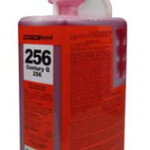
Multi-Clean reviewed and conducted some preliminary evaluations of the E-Mist ASMS system and found that it has the potential to be an effective way to quickly apply disinfectant solutions to large, complex surface areas.
Uniform Coverage
Using an electrostatic spray system like the E-Mist ASMS provides uniform coverage on areas that might otherwise be missed or forgotten during the cleaning and disinfecting process. Visual observation of complex geometric surfaces indicated a uniform film coverage when Multi-Clean #256 Century Q was applied with the E-Mist ASMS.
Transfer Efficiency
An important aspect of the spray application is to insure that the disinfectant being sprayed uniformly covers the desired surfaces and when used as directed, doesn’t produce airborne mists. The transfer efficiency is optimized with the electrostatic spraying device applying a liquid product at a preferred droplet size. Although we did not have a way to measure transfer efficiency, airborne mists were observed to be minimal.
Contact Time
Disinfectants don’t kill pathogens on contact, and therefore require contact time. While there are products that claim faster kill times for certain pathogens, the historical contact time using AOAC (Association of Official Analystic Chemists) methods for testing disinfectant efficacy has been a 10 minute contact time. The size of each electrostatically charged disinfectant droplet is controlled and optimized to achieve uniform coverage and contact time according to E-Mist. Visual observation under ambient humidity for sprayed surfaces achieved the desired 10 minute contact time.
No Rinsing: Even when sprayed on a mirror, the solution dried uniformly without streaking.
Saves Money: The ability to cover large areas quickly and uniformly has the potential to enhance productivity. The true intrinsic value of the E-Mist application is the potential reduction in overall infection rates.
Safety
While transfer efficiency was excellent, training users how to use the systems correctly are critical to using the electrostatic spraying process successfully. Inevitably, the possibility exists for generating some airborne droplets that could be inhaled, which maybe slightly irritating to the respiratory tract. Common sense safety precautions would suggest removing occupants from the rooms during the application process. Those involved in the spraying should consider the use of a dust mist mask to prevent breathing airborne droplets.
What about Wiping Surfaces?
Modern disinfectants like Multi-Clean 256 Century Q are considered “one step cleaners and disinfectants” because they are not inactivated by low to moderate levels of organic soil. This means that these products are tested in the presence of organic contamination and found to be effective when tested on certain pathogens. In contrast, bleach solutions typically have poor organic soil tolerance and a pre-cleaning step is usually needed.
Cleaning and disinfecting of surfaces almost always is a combination of chemistry (detergent + germicide) and physics (agitation). It remains up to the user to decide whether wiping a surface is needed. In healthcare, high touch surface cleaning is an important component of a comprehensive infection control program. It is our opinion, that High Touch surfaces that have been potentially soiled should be wiped with the disinfectant solution.
Insurance for surfaces that might get missed
The E-Mist application of disinfectants during the terminal cleaning of patient rooms offers potential added insurance that all surfaces have been contacted by the disinfectant solution. Further, spray application of disinfectants after restroom cleaning can also insure that disinfectants are applied to areas likely to be missed. Common bathroom hot spots are behind toilets, underneath urinals, under counters, behind trash cans, and around baby changing stations.
Conclusion
The electrostatic spray application of disinfectant solutions like Multi-Clean Century Q offers a promising method to insure that a disinfectant covers all hard surfaces that might harbor harmful pathogens. We were satisfied that the E-Mist ASMS provides a suitable means to apply disinfectants including Multi-Clean #256 Century Q Disinfectant Cleaner.
Resources:
1. Healthcare-associated Infections (HAIs), “Options for Evaluating Environmental Cleaning”, The Centers for Disease Control and Prevention, December 2010.
2. Literature from E-Mist Innovations, Inc. www.emist.global.com Copyright 2015.
Disclaimer: Multi-Clean is not specifically endorsing this spraying method or the equipment referenced. The information and opinions expressed are only those of Multi-Clean. It is up to the user to decide whether the methods presented are appropriate for use in their facility.

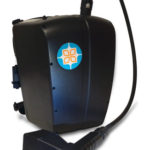
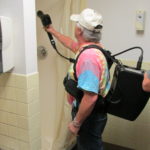
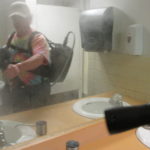
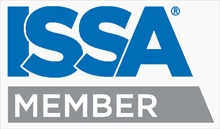
I would like to consider the ability of thanking you for your professional direction I have constantly enjoyed going to your site.
I am looking forward to the particular commencement of my school research and the whole groundwork would never have been complete without dropping
by your website. If I might be of any help to others, I would be glad to help as
a result of what I have discovered from here.
Would this application work in a Kennel environment: it’s to be used at a Pet Store